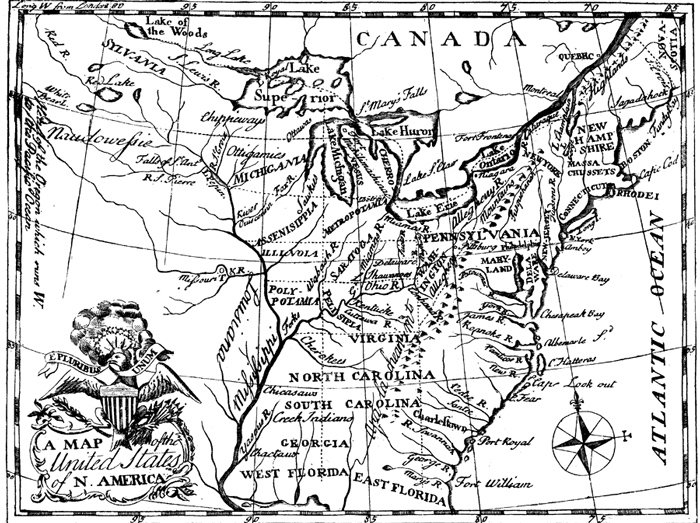This article discusses Jefferson's Land Ordinances of 1784 and 1785, in which he attempted to forever end the spread of slavery.
|
|

Ordinances of 1784 and 1785 |
Ordinance of 1784
The Ordinances of 1784 and 1785 were drafted by Thomas Jefferson. The primary purposes of the ordinances were to create procedures for dividing the land east of the Appalachian Mountains and west of the Mississippi River for settlement. This land was originally claimed by New York and Virginia, but was ceded to the newly created federal government during the Revolutionary War.
Specifically, the Ordinance of 1784 divided the land into self-governing districts, that could each apply for statehood when its population equaled that of the least populous state. As part of the Ordinance of 1784, Jefferson added an article that would have effectively ended the spread of slavery, but this article (the last) failed by a single vote and was not adopted. Below are Jefferson's five main articles from the Ordinance of 1784:
- The new states shall remain forever a part of the United States of America.
- They shall bear the same relation to the confederation as the original states.
- They shall pay their apportionment of the federal debts.
- They shall in their governments uphold republican forms.
- After the year 1800 there shall be neither slavery nor involuntary servitude in any of them.
Ordinance of 1785
The Ordinance of 1785 created the blueprint for dividing the Northwest Territory into rectangular land parcels called townships, which could further be subdivided into areas as small as 640 acres. Each acre was set at a price of $1.00. Because Congress, under the Articles of Confederation, lacked the power to levy and collect taxes, it hoped that selling land in this manner would help to refill the U.S. Treasury. Interestingly, the Ordinance of 1785 called for a section 16 in each township to be reserved for public school buildings, thereby establishing a means for the funding of public education.
|
|
|
|
Advertisement

Remove ad